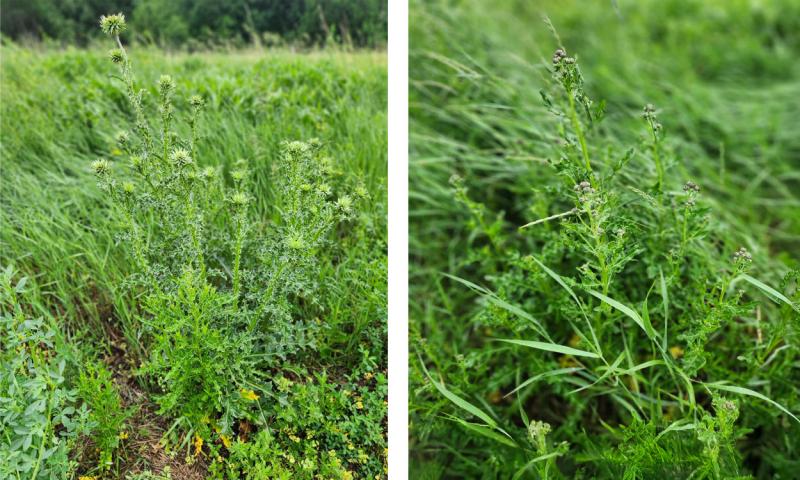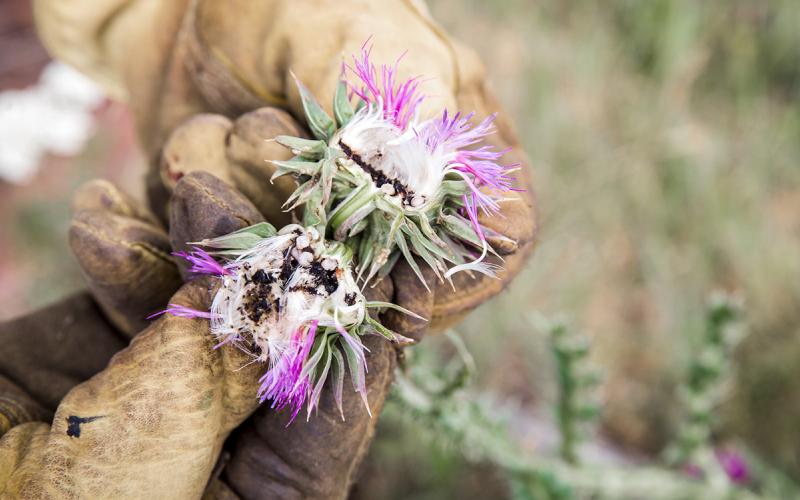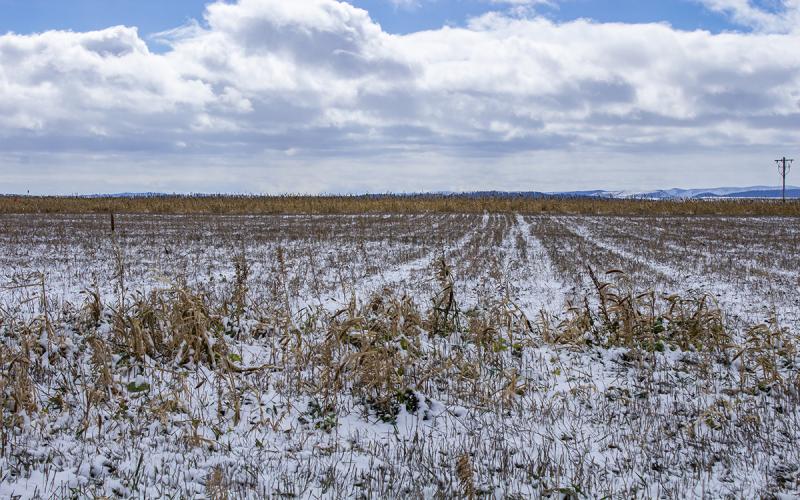
Written collaboratively by Eric Jones, Philip Rozeboom, Graig Reicks, Jill Alms, and David Vos.
Biennial (i.e., bull and musk) and Canada thistle are starting to bud across South Dakota (Figure 1). This is a critical growth stage for management, as the plants are beginning to produce seeds and herbicides are not effective. Budding plants should be clipped/mowed to cease seed production. Plants can be treated with herbicides in the fall when regrowth occurs or clipped/mowed again.
Clipping/mowing plants should be done with caution as the time between budding and the production of viable seeds can be short (days to weeks). If plants have begun to produce seeds, do not clip/mow these plants as the seeds can be dispersed across the landscape. The flowers/seeds of the mature plants should be cut off, bagged and destroyed. While this is a labor-intensive process, the amount of new plants introduced to the area and surrounding areas will be greatly reduced.
Areas should be monitored after clipping/mowing. Plants may resume growth within a few months after clipping/mowing. If an herbicide is to be applied, waiting until the first frost will likely be the most effective. The first frost signifies the time in the life cycle of thistle (and other perennial weeds) where the carbohydrates (i.e., sugars created by photosynthesis) are sent from the leaves to the roots/rhizomes. Applying an herbicide at this time will ensure the herbicide is being translocated to the roots/rhizomes for effective management. Refer to the specific herbicide labels and SDSU Extension’s most-recent Weed Control: Noxious Weeds publication for usage and application restrictions.


